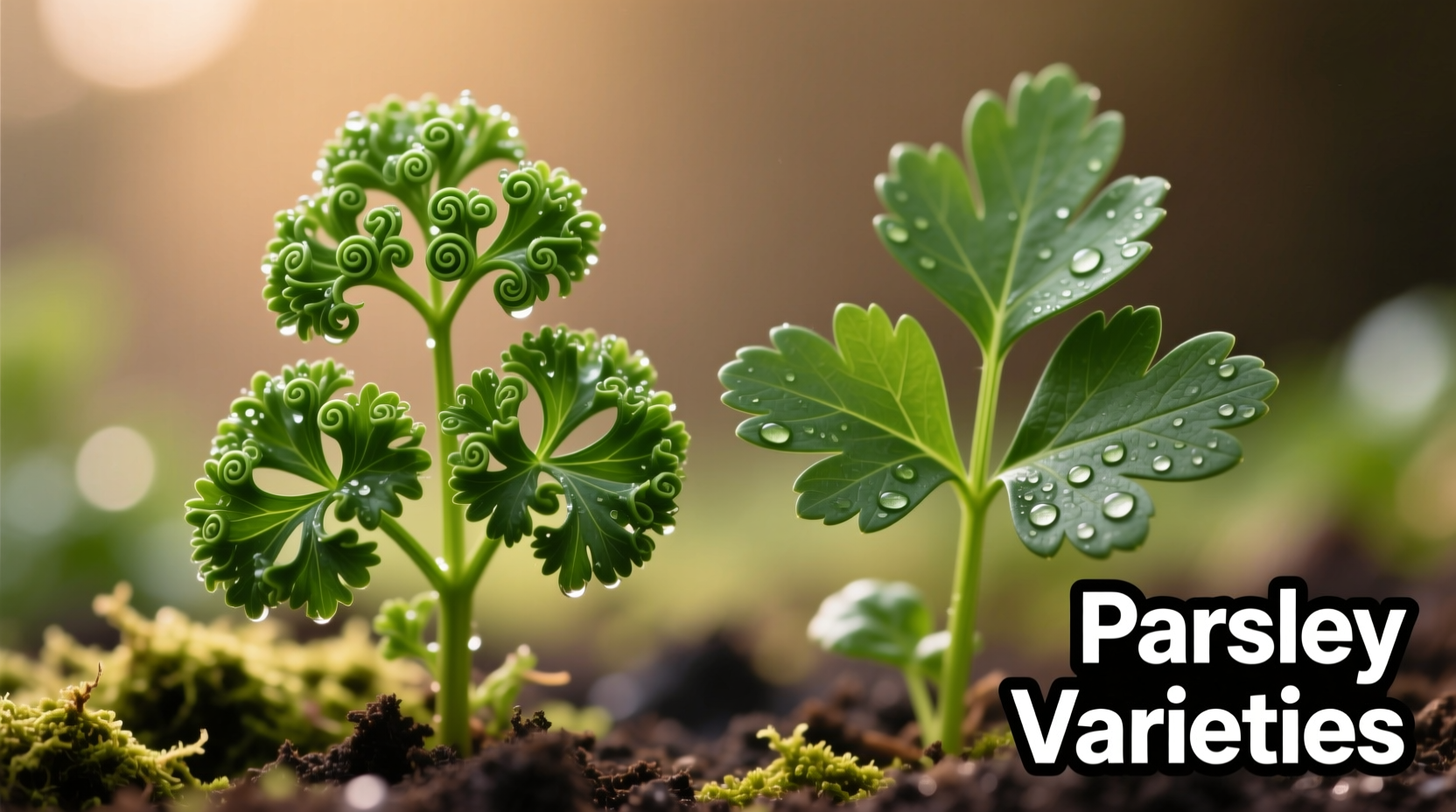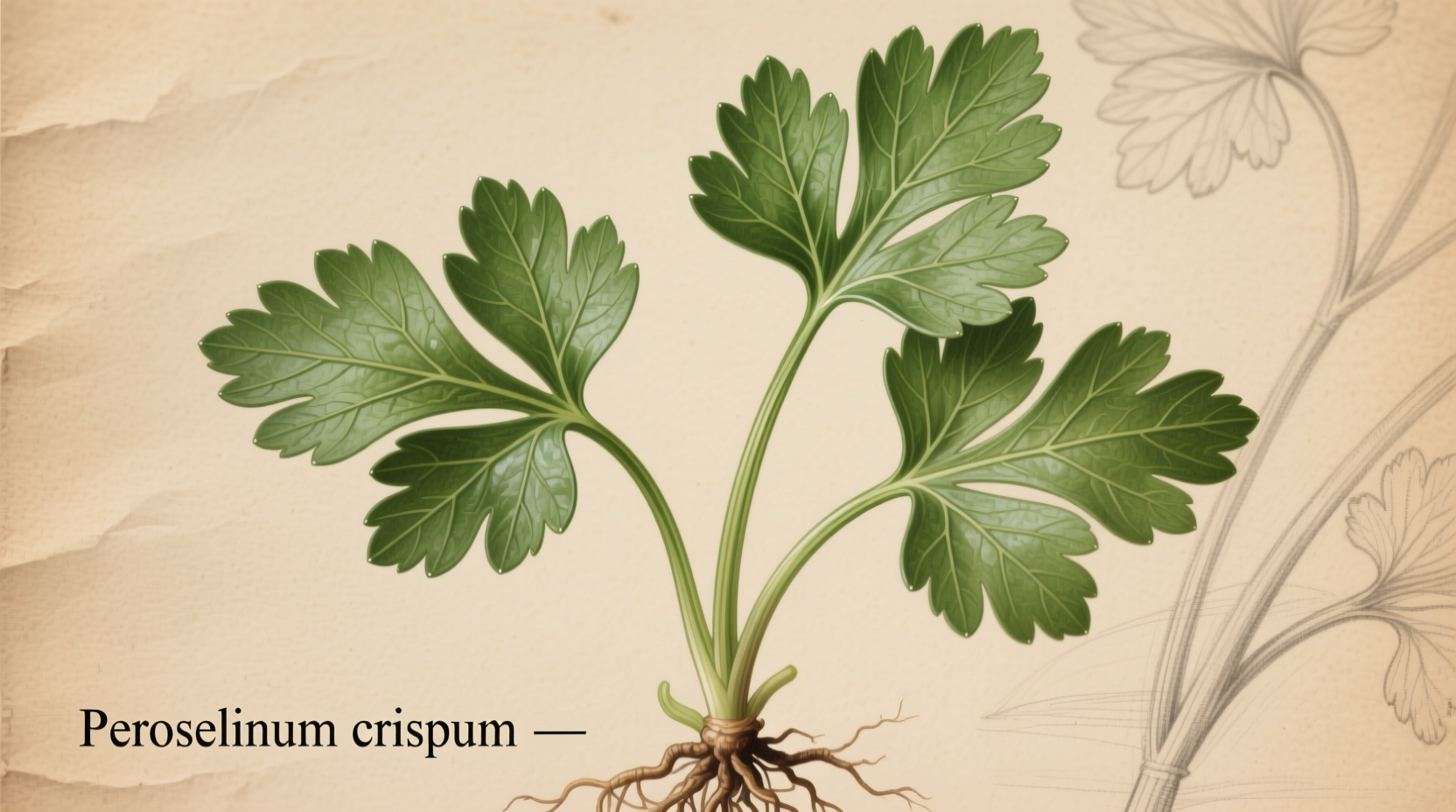Identify Parsley with Confidence: Your Visual Guide
Whether you're selecting fresh herbs at the grocery store or identifying plants in your garden, knowing exactly what parsley looks like prevents costly mistakes and culinary disappointments. This comprehensive visual guide provides the precise identification markers you need to distinguish parsley from similar herbs with 100% accuracy.
Key Visual Characteristics of Parsley
Understanding the specific visual traits of parsley helps you identify it correctly in any setting. Let's break down the essential features:
Leaf Structure and Texture
Curly parsley displays densely packed, crinkled leaves that form tight, rounded clusters. When you run your fingers over them, they feel slightly thick and springy. Flat-leaf parsley (often called Italian parsley) has broader, smoother leaves with distinct serrated edges that feel more delicate between your fingers. Both varieties grow in a distinctive triangular pattern from the central stem.
Color Variations
Fresh parsley maintains a vibrant medium to dark green color. Curly parsley often appears slightly lighter green than its flat-leaf counterpart. As parsley ages or dries out, the color fades to a dull yellow-green - a clear indicator it's past its prime. The stems remain bright green when fresh, turning woody and darker as they mature.
Growth Pattern and Size
Parsley grows in distinct rosettes reaching 10-18 inches in height. The leaves emerge in three-part clusters (ternate arrangement) from central stems. When harvesting, you'll notice the inner leaves are typically smaller and more tender than the outer mature leaves. This growth pattern differs significantly from cilantro, which grows with more random leaf placement.
| Herb | Leaf Shape | Leaf Texture | Stem Color | Distinguishing Feature |
|---|---|---|---|---|
| Curly Parsley | Tightly curled, ruffled | Thick, springy | Bright green | Resembles miniature lettuce heads |
| Flat-Leaf Parsley | Smooth, broad with serrated edges | Thin, delicate | Medium green | Similar to flat-leaf celery but brighter green |
| Cilantro | Rounded, lacy | Thin, delicate | Pale green | Distinctive soapy aroma when crushed |
| Flat-Leaf Celery | Longer, narrower | Ribbed, fibrous | Light green to white | Noticeable stringy fibers when pulled |
When Identification Gets Tricky: Context Boundaries
Certain conditions make parsley identification challenging. Young parsley plants resemble mature cilantro, creating confusion for gardeners. According to the USDA Agricultural Research Service, the most reliable differentiator is the scent test: parsley has a clean, grassy aroma while cilantro emits a distinctive citrusy-soapy smell when crushed (USDA ARS).
Seasonal variations also affect appearance. Spring parsley features brighter green, more tender leaves, while summer growth becomes darker and slightly tougher. In fall, parsley may develop purple tints in cooler temperatures - a natural response that doesn't affect flavor.
Avoid Dangerous Mistakes: Toxic Look-Alikes
Correctly identifying what fresh parsley looks like is crucial for safety. Poison hemlock, a highly toxic plant, shares some visual similarities with parsley, especially to untrained eyes. The University of California Cooperative Extension warns that poison hemlock has smooth, hairless stems with distinctive purple blotches and a musty odor, unlike parsley's solid green stems and fresh aroma (UCCE).
When foraging, always apply the "triad of identification": verify leaf structure, stem characteristics, AND scent before consumption. Never consume wild plants unless positively identified by multiple reliable characteristics.

Practical Identification Tips for Shoppers
When selecting parsley at the store, look for these freshness indicators:
- Vibrant color without yellowing or browning
- Firm stems that don't bend easily
- No wilting or slimy spots on leaves
- Crisp texture when gently squeezed
Curly parsley often lasts longer in the refrigerator due to its thicker leaves, making it better for meal prep. Flat-leaf parsley offers more intense flavor preferred by chefs for finishing dishes. Understanding what does parsley look like when fresh helps maximize both shelf life and culinary impact.
Common Identification Errors to Avoid
Many home cooks confuse parsley with similar herbs. Remember these key distinctions:
- Parsley vs Cilantro: Cilantro leaves have a more rounded, lacy appearance with smoother edges compared to parsley's defined serrations. Cilantro stems are more delicate and often paler green.
- Curly vs Flat-Leaf Parsley: While both are parsley, flat-leaf has more robust flavor preferred for cooking, while curly offers milder taste and better visual appeal as garnish.
- Parsley vs Celery Leaves: Celery leaves grow in more linear patterns with noticeable parallel veins, while parsley displays the characteristic triangular cluster formation.
When in doubt, perform the "crush test": rub a leaf between your fingers. Parsley releases a clean, grassy fragrance without the citrus notes of cilantro or the strong celery scent of its namesake vegetable.
Seasonal Changes in Parsley Appearance
Parsley's appearance evolves throughout the growing season. In early spring, new growth appears bright lime green and extremely tender. By mid-summer, leaves darken to a rich emerald green and develop slightly tougher texture. Fall brings potential purple tints to stems and leaves as temperatures drop. Understanding these natural variations prevents misidentification of healthy seasonal changes as spoilage.











 浙公网安备
33010002000092号
浙公网安备
33010002000092号 浙B2-20120091-4
浙B2-20120091-4